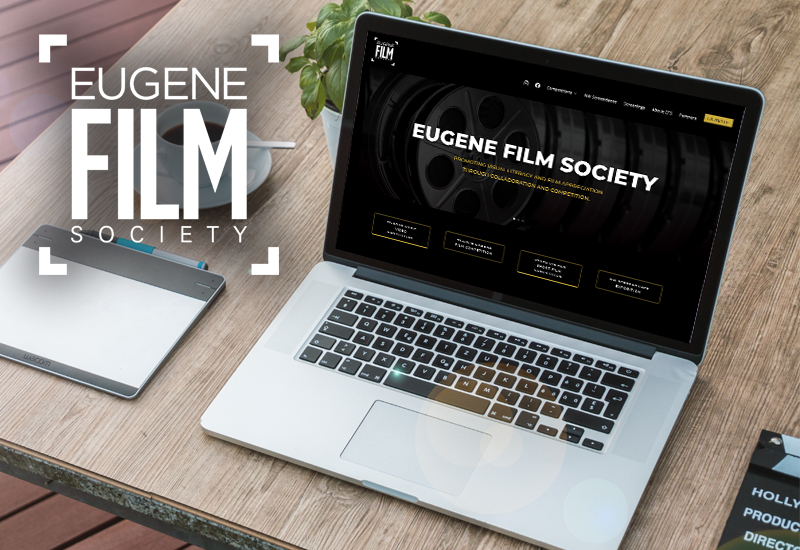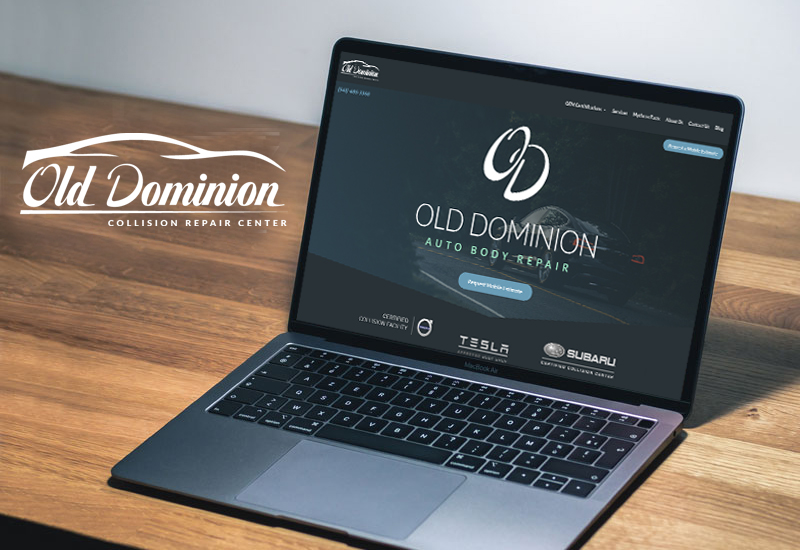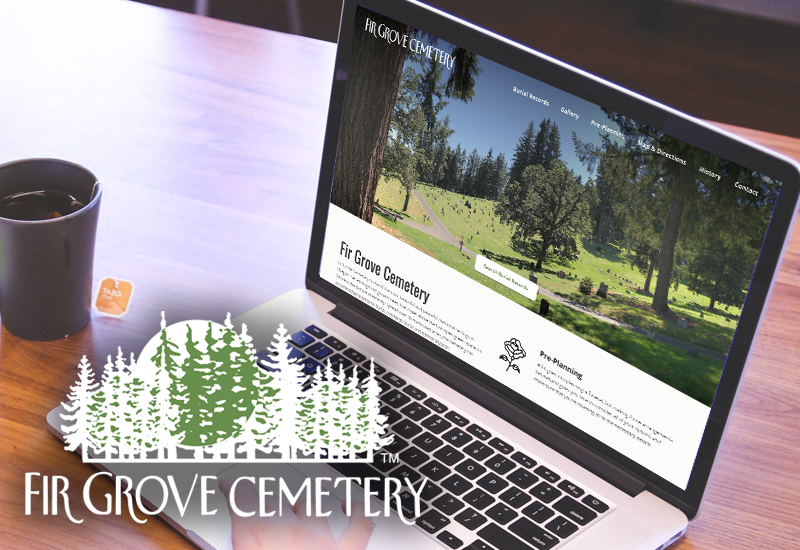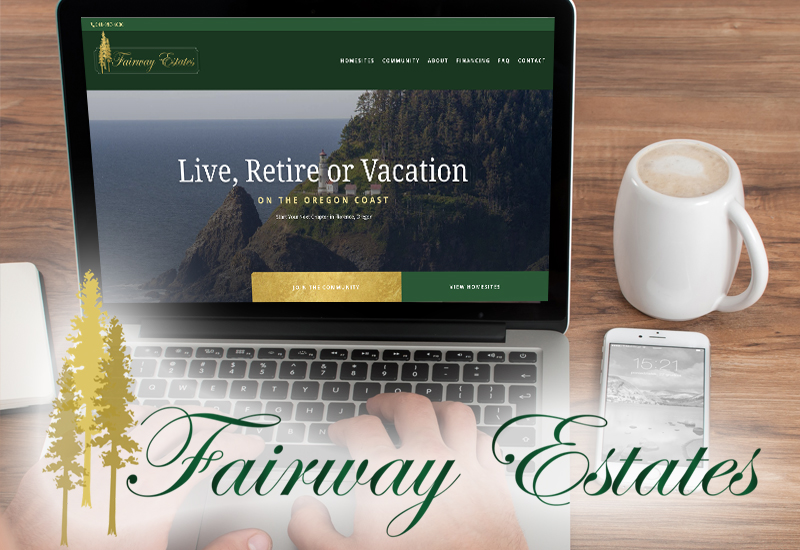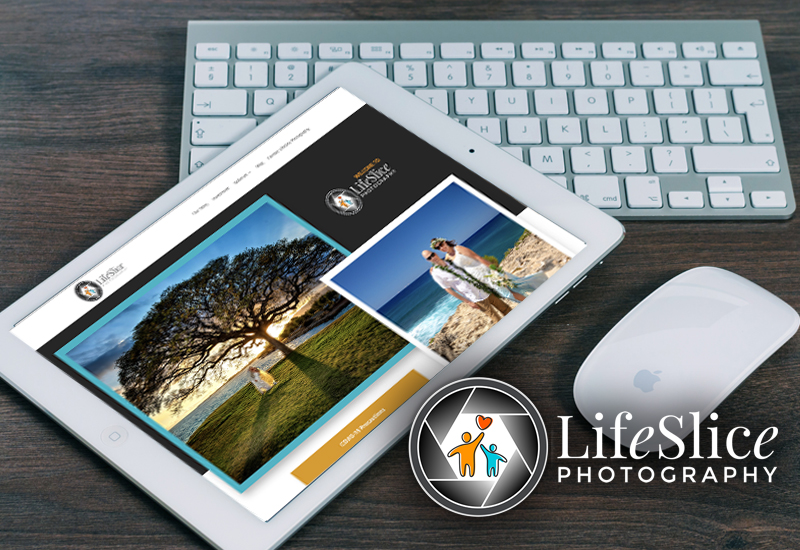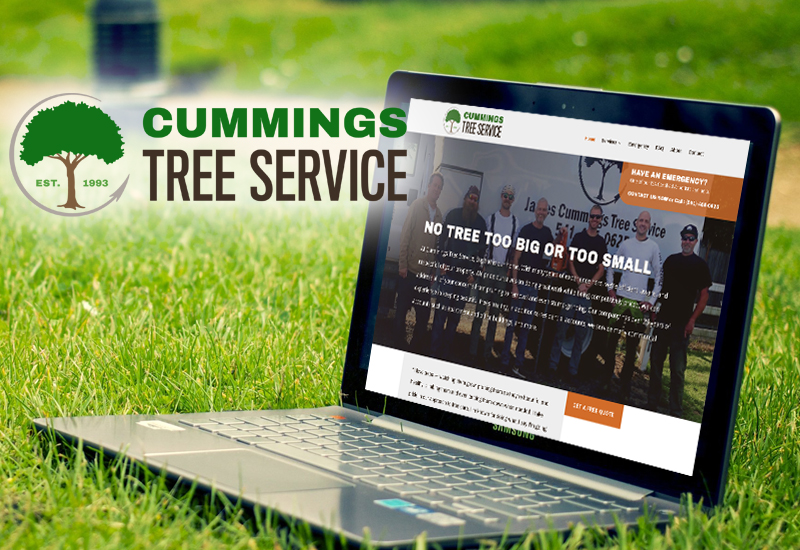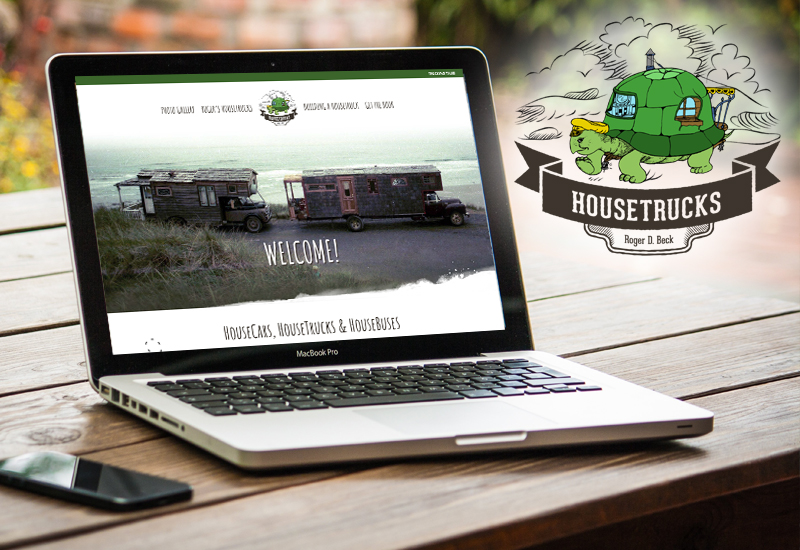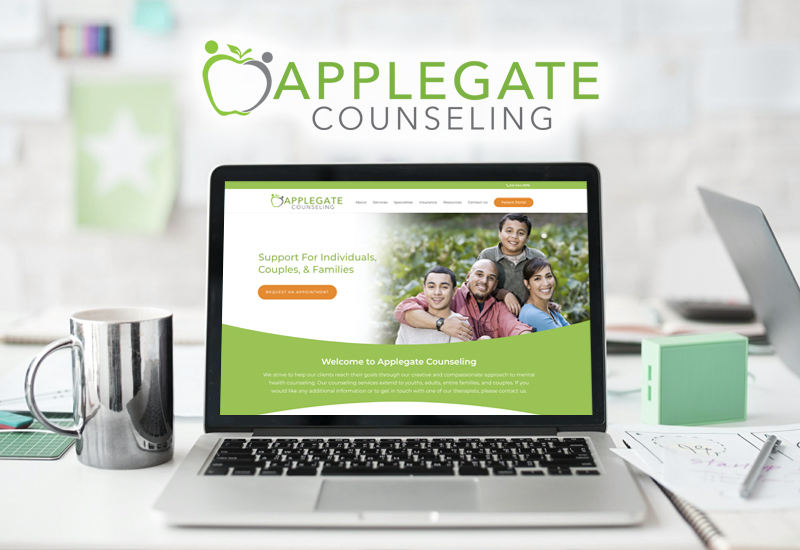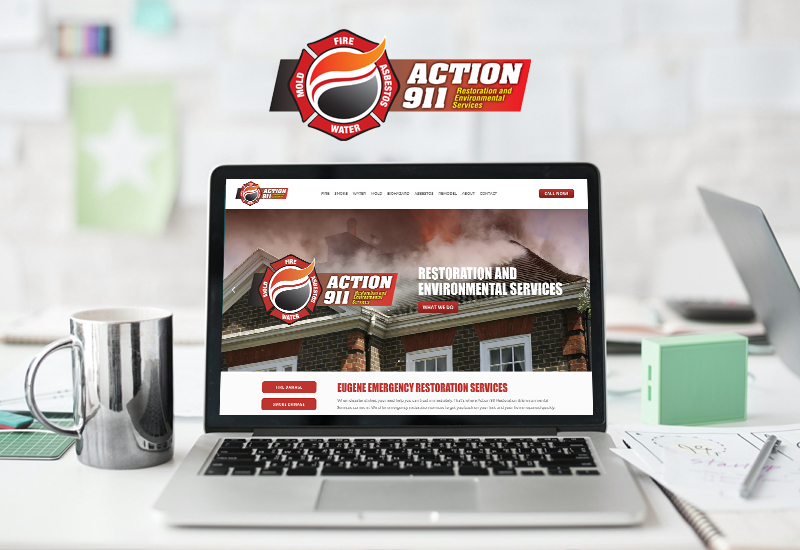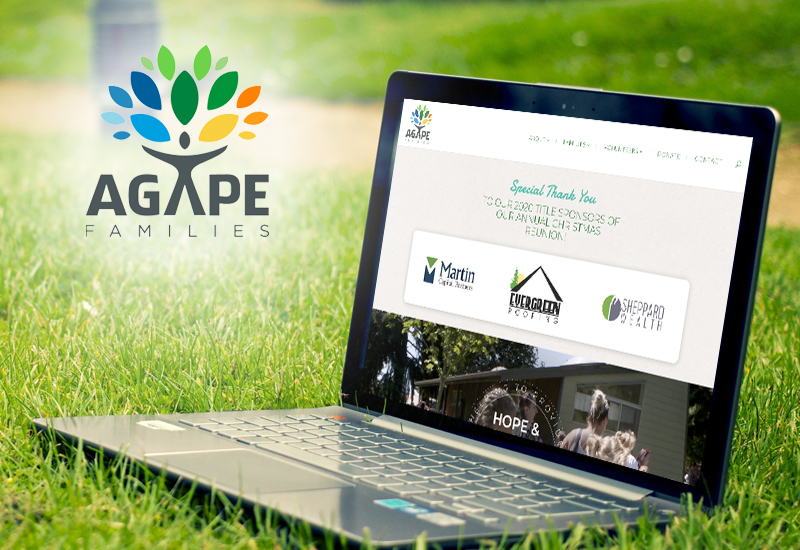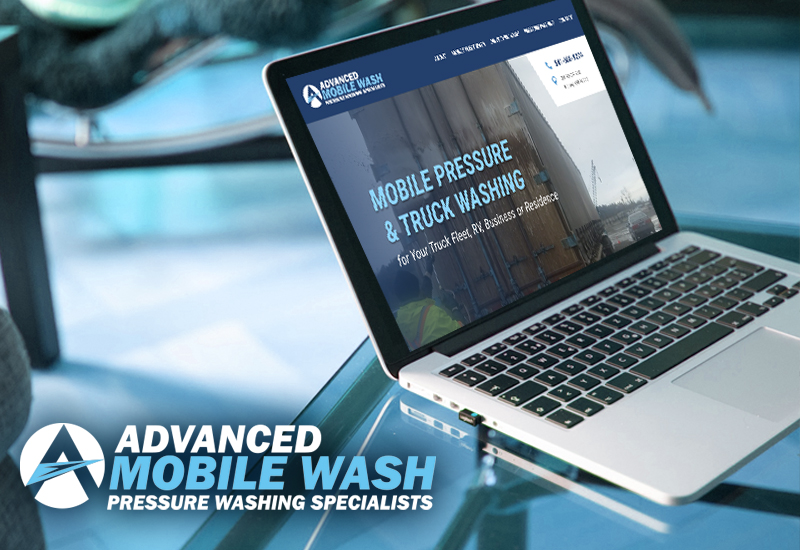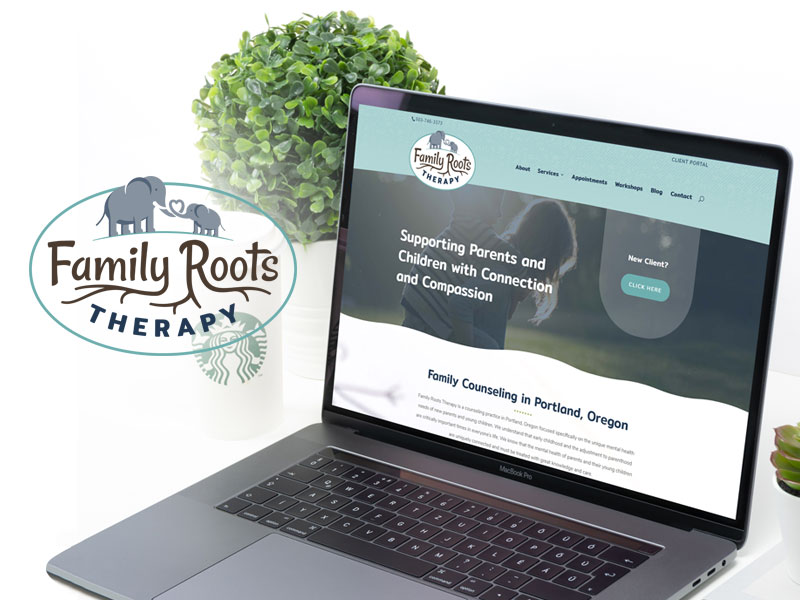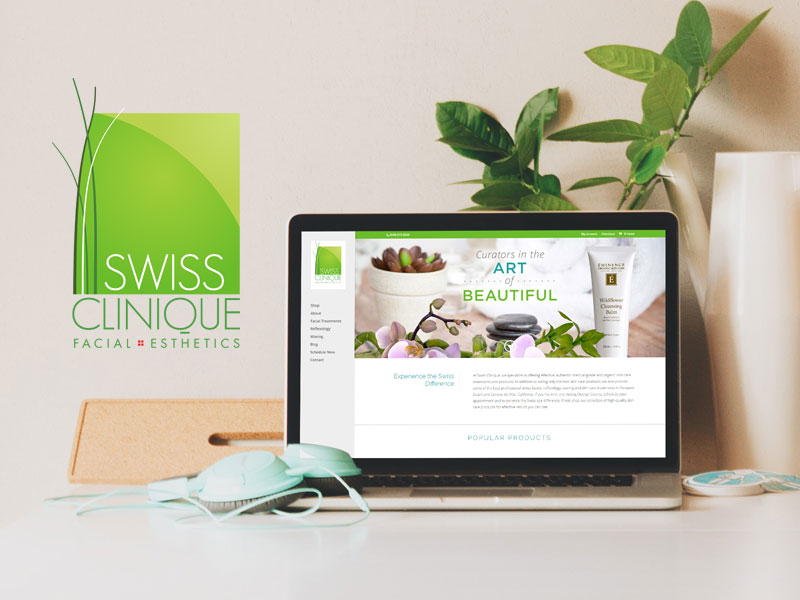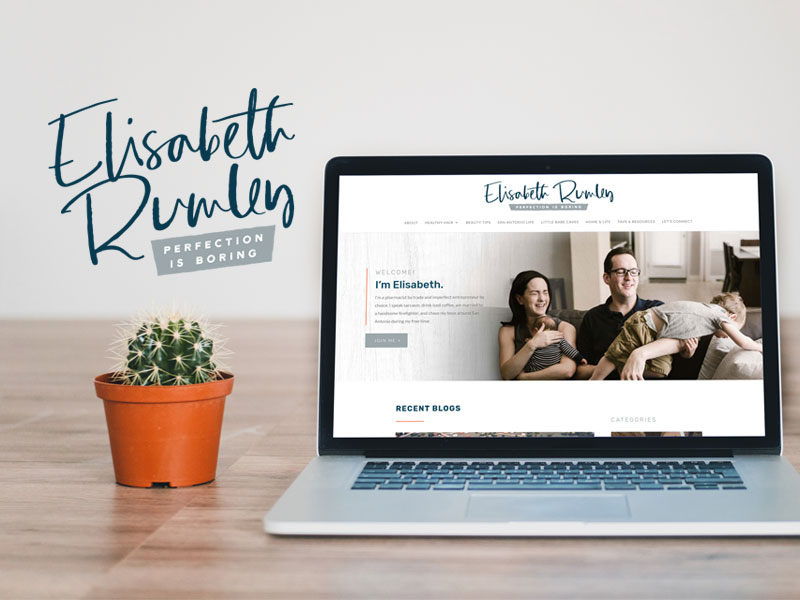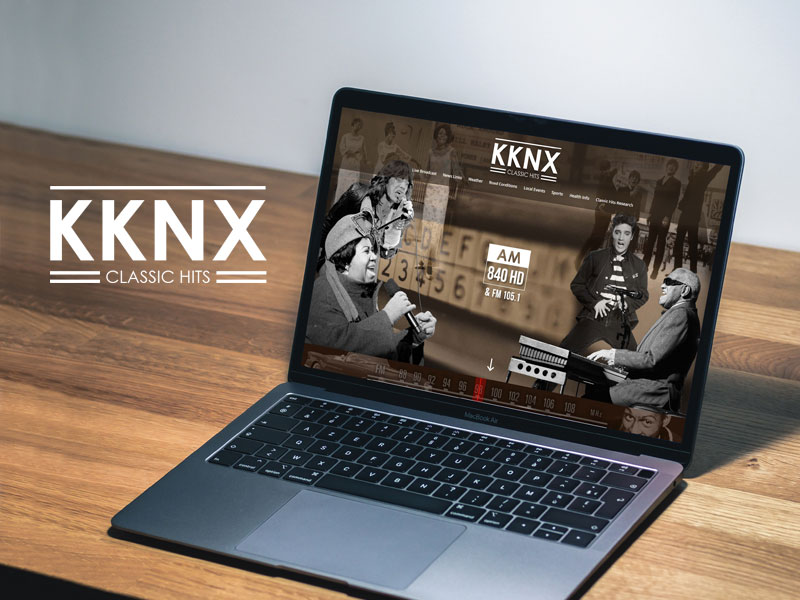by Deanna Rivera | Jan 21, 2021 | Branding, Graphic Design
What is the current state of your branding package? Is your logo responsive? Just like a website, a logo will benefit your business the most if it responds to mobile devices. If a website isn’t optimized for mobile viewing 91% of customers will turn to a competitor.
In a world where screens come in all manner of shapes and sizes your logo will benefit your bottom line the most if it is recognizable and memorable everywhere. However, this means much more than making your logo larger or smaller to fit the screen. Your logo will best serve your business if it is responsive and adapts to any use-case accordingly.
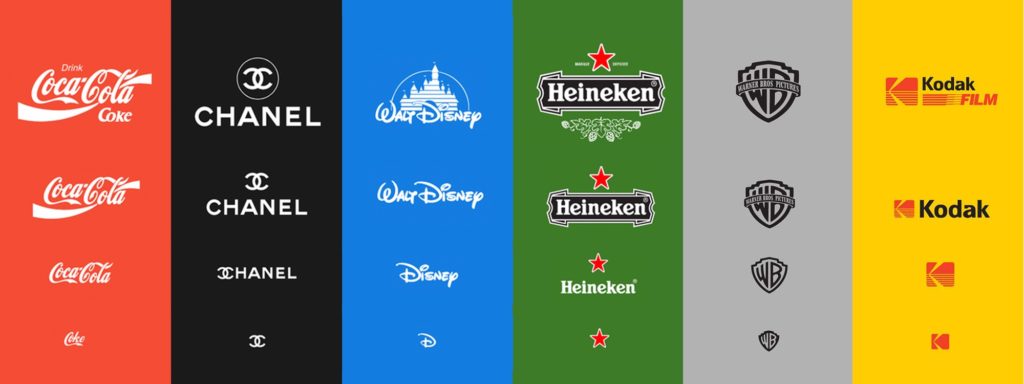
Image Source: https://medium.com/@jackanto/responsive-logo-must-to-follow-4901cb0cfcbc
Creating Trust
A branding package is much more than just a set of pretty graphics made for your business. Logo packages should be designed to serve a purpose. A brand that functions well is like a digital storefront: When your brand is attractive, updated, and appealing it will help create a foundation of trust between you and your customer.
Even as late as 2015 most small businesses could get away with one version of their logo in one place: on the sign in front of their business. Today’s logos have to function better and accomplish much, much more than they used to. Over 50% of consumers surf the net on smartphones. If your logo can’t scale down to smaller screens you’re potentially turning away over half of your business.
Over 80% of customers view your digital storefront before they visit your actual business or make a purchase decision. For a website to scale effectively you need a logo that scales as well. Customers are more likely to trust you if your business is well-represented in all scenarios.
Responsive Logo Attributes
Every logo that has been designed to be responsive shares a few specific traits. Those traits, in order of importance are:
- A responsive logo is recognizable in black and white, even if the mark has color it must be recognizable and clean without it. Why? If your logo doesn’t work in black and white it won’t work well on different mediums such as laser engraving, wood and glass etching, and vinyl cuts.
- It must be recognizable at sizes as small as 32 pixels wide. Why? Because your logo needs to be recognizable from a distance as well as on small devices.
- There must be different versions for different media types in addition to versions that work well on any background. Why? Because your logo should be easy to use, it should look great on a photo, solid color, or on black or white.
- There must be an icon and a wordmark that can stand separate from each other and still be recognizable. Why? There are times where it isn’t appropriate to put your entire logo on a document or product. This is why it is best to have both text and an icon that can stand apart and still represent your business.
- There are versions that scale to large sizes effectively and add meaning as a logo gets larger. Why? Small marks, when scaled up, can often dominate space and be the center of visual attention in a bad way. They’re optimized for contrast at small sizes, but that contrast can be too much at large sizes. A great example of this is the Warner Brothers logo above.
Improve Your Customer Relationship with a Responsive Branding Package
A responsive logo and branding package can work wonders to improve the relationship you have with your customers and even increase the value of your product. Contact UplinkSpyder and we’ll make sure to set you on the right path with a logo for your business that communicates, is responsive, and is beautiful.
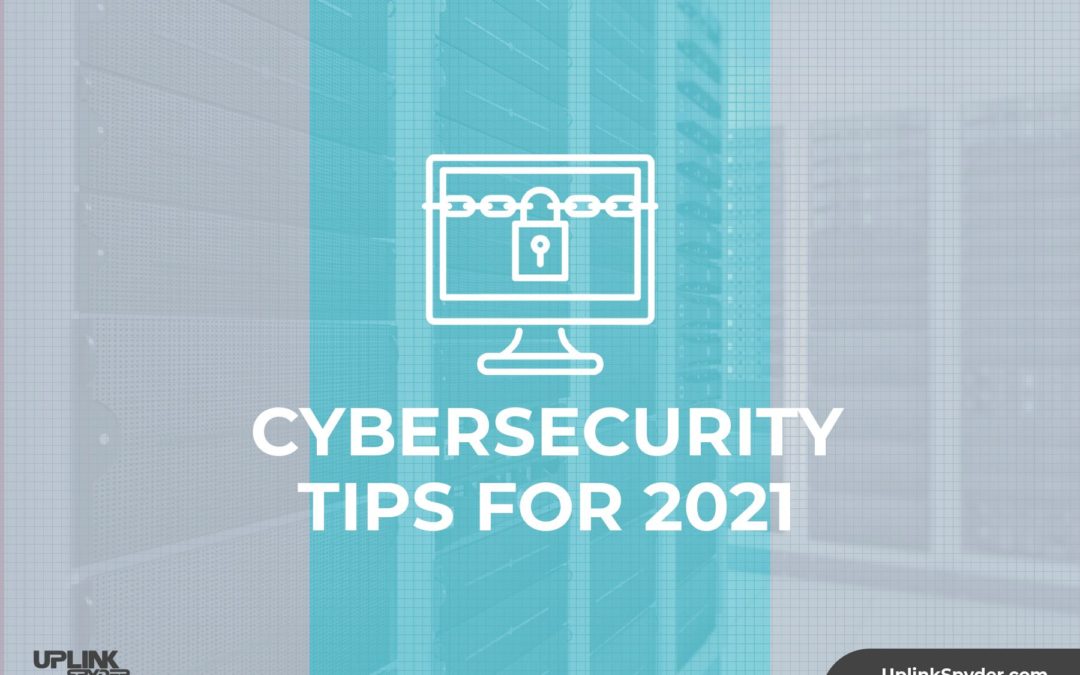
by Deanna Rivera | Jan 15, 2021 | Cybersecuirty
The whole world is spending more time online these days and that includes people who have nefarious intentions. So, here’s a quick reminder of the top 3 things you need to do to protect yourself. Starting with the most important.
Cybersecurity Tip 1. Password Security
Did you know that a very long password is better than a password that is complex? For instance: goatcheesetrampolineuncleocean is better than C0mpl3x!ty! But regardless, don’t use anything personally identifying in your passwords like your name, your job, your address, your kid, your dog. You get the idea.
Cybersecurity Tip 2. Password Security. So important it is on our list twice
Create a unique password for every single thing you log in to. Every single one. No, really. Use a password manager like LastPass to help you create and keep track of them (free). If you just rolled your eyes and said you never will do that, you aren’t alone, but you are at risk. At least follow our advice for any accounts that have your bank account, address, social security, or credit card information.
Cybersecurity Tip 3. Check Sender Identity
Most devious plots are hatched through email and, these days, mobile messages. So, take care to verify the sender before clicking on links, opening attachments, forwarding a message, or replying. Check the email address it is coming from. Check that any links are taking you to the place stated by hovering before clicking. Use a really good spam filter (or email program with a really good spam filter) in order to block most of the attacks. Most importantly, just take the time to think critically before acting.
There’s a reason why “Spyder” is spelled with the “y”. Security is important to us. We’ll send more tips in the future and if you’d like to schedule a ZOOM presentation for a team or group on the subject, let us know.
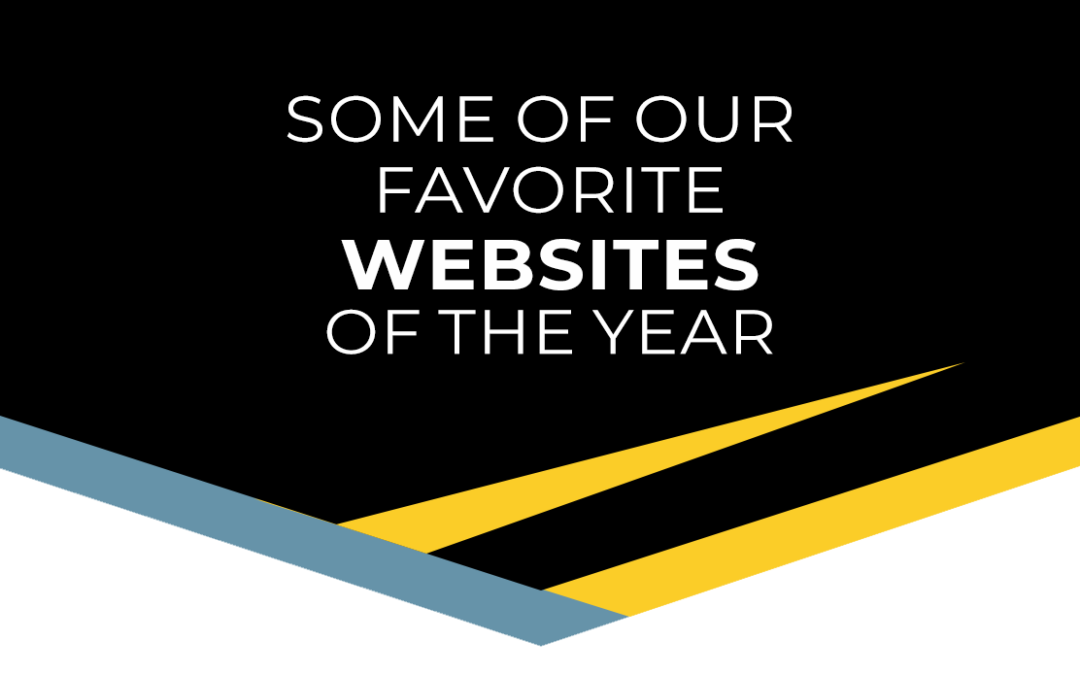
by Deanna Rivera | Jan 7, 2021 | Website Design
Eugene Film Society
Eugene, OR
Community arts organization that
supports regional filmmaking.
eugenefilmsociety.org
Studio Tru Salon
Eugene, OR
We go above and beyond to make you feel like a king or queen while visiting our professional hair salon & studio.
studiotrusalon.com
Fir Grove Cemetery
Eugene, OR
Fir Grove Cemetery is one of the most beautiful and peaceful memorial settings in Oregon.
firgrovecemetery.com
Armored Storage
Eugene, OR
We go above and beyond to make you feel like a king or queen while visiting our professional hair salon & studio.
armoredstorageeugene.com
Pediatric Dental Associates
Eugene, OR
Specialized dentistry for children and adolescents in a warm and fun environment.
eugenepediatricdentist.com
Action 911
Eugene, OR
Emergency restoration services for homes and businesses in Lane County.
4action911.com
Agape Families
Eugene, OR
Oregon-based non-profit that aims to provide hope and stability to families impacted by incarceration.
agapefamiliesoregon.org
Advanced Mobile Wash
Eugene, OR
Mobile pressure & truck washing for your truck fleet, RV, business
or residence.
amobilewash.com

by Administrator | Sep 23, 2019 | Search Engine Optimization
You have probably noticed we’ve been talking a lot about search engine optimization (SEO) lately, but you probably don’t know why. Well, it’s partly because small business SEO is vital to the success of your business. However, we’re talking a lot about it because it’s becoming clear that most small business owners already know how important SEO is. The problem is, they try to either do it themselves or they hire that guy in some basement who sounds like he knows what he’s doing and charges less. What we’re seeing is a lot of common mistakes made that harm instead of help business’ online presence, and that results in lost revenue.
4 Simple Steps to Improve Your Small Business SEO
It should go without saying, but we’re going to say it anyway: SEO is a beast of a skill to learn. There are a million and one ways to do almost everything. Every day, someone else comes up with a fresh new hack or trick. What we teach you in this blog, are things we know work from 10 years in business and over 20 combined years of experience in the industry.
1. Use WordPress
Yes, that means a switch from Wix, Weebly, Square, Drupal, or whatever else it is you’re using and use WordPress. And if you can, we even recommend that you START with WordPress. Even if you have a small budget and those “drag and drop” sites are “cheaper.” While we know there are many web-hosting platforms, WordPress is bar-none the best for SEO. It has the ability to grow with you and your business. Here are a few things we like about WordPress:
WordPress Is Best for SEO
A big part of this is due to free plugins like Yoast. Yoast allows you to set the SEO Title, Meta Description, and URL, so they are all optimized. It also uses the Flesch Reading Ease to score the readability of your content—something that’s incredibly important. Yoast checks for duplicate content throughout the site as well. It alerts you if you have two or more pages competing for the same keyword (something you want to avoid).
We could go on and on, but we’ll leave our love for Yoast summed up in an image of pure happiness: posts with all green happy little dots. For Yoast, red is bad, orange is OK, and green is perfection.
WordPress Is Best for Design
We use WordPress exclusively. That’s in part because of the freedom it gives our designers in creating beautiful and specialized websites for our clients. If you want a beautiful and straightforward 4-page website, you got it! If you want an intricate e-commerce site, you got it! WordPress will make it easy to allow your website to grow as your business does.
2. Focus on Mobile First
A couple of years ago, Google announced it would favor mobile-friendly websites. Another term used for “mobile-friendly” is “responsive.” That means the site conforms to the size of the phone or device it’s on. The user experience on mobile is just as good, if not better than on a desktop computer. Since mobile use accounts for over 52.2% of all website traffic, you can understand why Google, and now us, puts such an emphasis on mobile. Your mobile site should load fast and be user-friendly.
A simple way you can optimize the mobile version of your website is to make sure you avoid large images.
That’s right—while the desktop version of your website has the space and storage for videos and large graphics, the phone does not.
A great example of this is the website we recently completed for Jurassic Storage, here in Eugene. On the desktop version, the site opens up with a video in the header that goes over the property. It’s fun and gives viewers a birds-eye view of the storage facility.
However, if you’re on your phone looking for a local storage unit, you’ll see a more straightforward website that still gives the consumer the information they need.
You can see with the mobile version of their site, the button is larger. In addition, the information people are after most is front and center.
3. Blog Consistently
Yes, that means you, Mr. Plumber, and local HVAC company. Every single business that wants to dominate their market online absolutely needs to be blogging. We’re not talking lifestyle blogs but educational and informative blogs that don’t just bring value to your customers but also are optimized to bring in more website traffic. More website traffic means more business. Simple as that.
When you read the 2018 State of Inbound Marketing by HubSpot, you will see that 61% of marketers say that growing their SEO and organic presence is their top priority, and 55% of marketers make blogging their second-most important priority.
Here’s a secret (that’s not a secret): You can’t have good SEO and a strong online presence without excellent and consistent content. Investing in high-quality and optimized blog posts is a wise way to spend some of that marketing budget.
Here are just a few reasons we are huge fans of blogging:
1. They keep working for you, even after you pay, unlike ads that stop working the second you stop paying.
2. You can rank for multiple keywords from one 1,000-word blog. That means one blog has the potential to bring in hundreds/thousands of website visitors you usually wouldn’t get.
3. Blogs help you build brand trust and loyalty.
4. Blogs help you convert readers to buyers.
4. Hire an Editor
We have a handful of freelance writers from all over the country who help us keep up with the demands of content. However, no matter how good they are, we forbid them (and even us here in the office) to edit their work. That’s why we have a few high-quality editors we use for all content.
While nobody is perfect and typos happen, you significantly reduce that risk by hiring a professional editor. Just like we all cringe when we see grammatical errors or typos, so does Google. So, clean up that site and make sure your grammar is top-notch.
Contact Us Today
We know all these simple steps to improve your small business SEO seem simple to us because we do it day in and day out. If you’re not feeling adventurous or, don’t have the time, reach out to us, and one of our SPYDERS will be happy to do the heavy lifting for you.
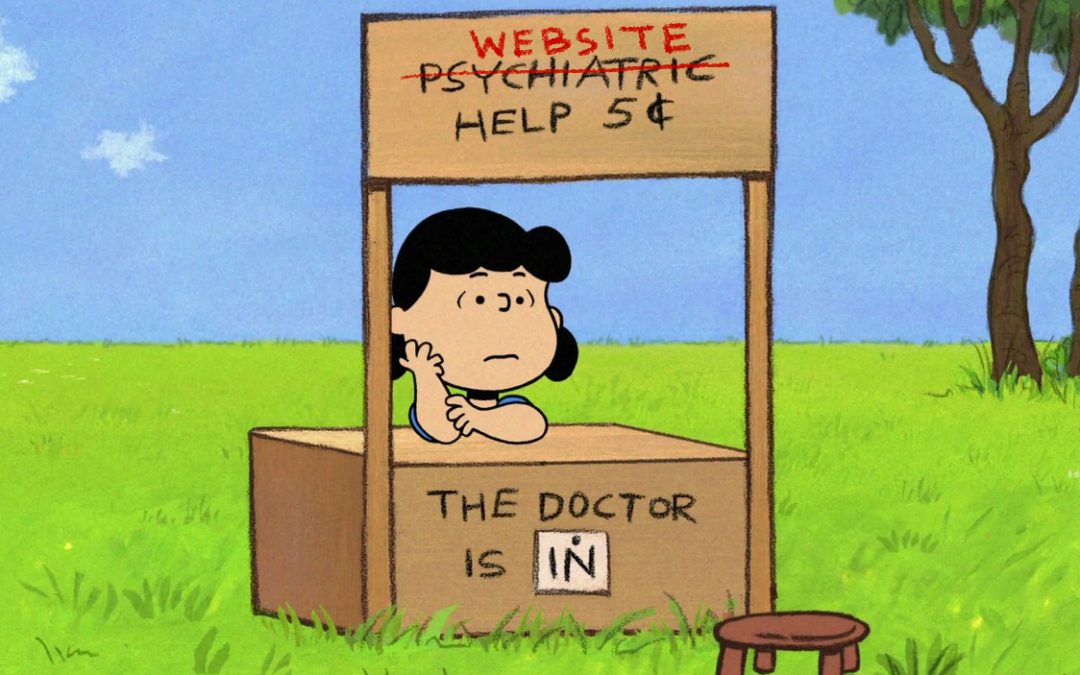
by Deanna Rivera | Aug 5, 2019 | Website Design
We work with a lot of clients that start out building their own website on any number of “do it yourself” platforms like Weebly, Wix, GoDaddy, Square and more. And every once in a while, we support this and help improve these websites – usually because of budgetary concerns. Because of this, we feel it’s important to help others understand best practices for how to build a website from scratch on one of these DIY platforms. Our intention is to save you money, time, and frustration.
NOTE: We absolutely feel the best possible investment you can make in the growth of your business is a stand-alone website. You’re facing an uphill battle if you try to go it alone. There are many reasons for this, that we’ll include at the bottom of this article. But we do want to help if you choose the DIY model.
#1 Content – The One Word Answer to “How to Build a Website From Scratch?”
If you aren’t willing to write content when you build your website…at least 3000 words of it to start and more over time…then you’re wasting your time. Your website will not be found in organic keyword searches unless you point ads to it or have very little competition. Content is the #1 essential ingredient in being found. There’s an expert recipe for creating awesome searchable content. But you can get by just starting with 300 words about each of your services or products, 300 words about you and your team, 300 words about frequently asked questions, and 300 words about anything else important to your customers. Try to write 10 pages.
If you can afford it, hire an expert to look at the content through the lens of a search engine. Maybe even have this expert (hint: us) map out the keywords you should write around. If your eyes started crossing just now, then just write. The only point here is that there are ways to make the content better and give each page a better chance of being found.
Adding more content over time is the key to building your website to become a marketing tool for you. Stagnant websites don’t get as much love, period. Think of your website as a honeycomb. Every page adds a cell to the comb and every cell attracts more bees. Buzz. Buzz.
#2 SEO Tools
Every one of the DIY builders has optional tools for creating metadata. Use these tools to the best of your ability (or hire us to help). The most useful reason is because you can craft your SERP (Search Engine Results Pages). These are the little snippets that show up in searches. Like this one:

A SERP has a title, a URL and a description.
The DIY builders most often will let you craft these SERPS. Again, there is an expert recipe for this, but the best thing to do if you are going it alone is to try to attract a click. Use action words. Highlight the best of what they’ll learn if they click.
#3 Design
Almost every single DIY website we’ve seen has too many images that take up too much space, are too large, and don’t fit well with the text. Because you aren’t a graphic designer, the chances of you having the same issue are pretty good. So. Follow my father’s advice: KISS. Keep. It. Simple. Sweetie.
One photo per page. Try not to have it be a ginormous photo. Try really hard to make sure it isn’t pixelated. Try to have the content come FIRST, before the photo, so that the search engines will get to the content before running into an image.
Why Don’t We Want You to Follow Our Three Steps for How to Build a Website From Scratch?
I like the bee reference from before, so let’s continue with that. No matter what you do, using a DIY builder means that you will be part of a hive – a very, very, very, very big hive. And so when a search engine finds you, they’ve had to enter that hive and there are a lot of distractions. Even if you have your own URL pointing to your section of honey – there are still obstacles and it’s really noisy, so a search engine won’t stay too long. They prefer websites that have their own piece of property.
Also, you don’t own a DIY website but more, you’re renting it. You own the content, which is another reason to invest in that because you can take it with you when you’re ready.
Last, you won’t be able to easily change the way it looks once you’ve chosen a template so it’s harder for the website to grow with you. Whereas websites we create for you are modular and can morph and change and grow over time. Plus, there are tons of other options for search optimization, functionality, and beautiful design.
The biggest issue is always cost. Keep in mind that we offer payment plans and also think about the investment against a bigger picture. Your website is the single biggest and best marketing tool you can have for the ongoing growth of your business. Somewhere around 90% of people look at a business online before buying from them. That’s almost everyone. Mic drop. 🙂

by Administrator | Apr 30, 2019 | Website Design
We’re proud to announce that we have not one, not two, but six new website launches to share with you! From storage facilities to a family therapist a beauty guru, take a look at our newest additions to the UplinkSpyder web.
Family Roots Therapy
Family Roots Therapy, based in Portland, helps young children and families through trauma. The psychiatrists at Family Roots believe that too often, children’s issues are treated as an afterthought and because of that, they commit themselves to deliver timely help. Their website features an easy-to-navigate layout with friendly imagery. There’s also a simple portal where clients can make appointments, pay bills, or send a secure message to therapists.
Castle Storage
When you visit Castle Storage in Eugene, you’ll immediately notice a large dragon. Her name is Ophelia and she guards her treasure as well as yours.
The Castle Storage website was built with Ophelia in mind. The imagery was fun to work with on this one! Rich brick textures and gold highlight the site, while information and a payment portal for users are easily accessible.
Planet Storage
Planet Storage’s website is just plain fun. Buttons glow green and playful alien caricatures (hand illustrated by our designer, Alina) guide visitors through the website.
Based in Eugene, Planet Storage has out of this world staff who readily help answer any questions you may have.
Swiss Clinique
Swiss Clinique treats clients to the pampering of a lifetime. This new website (our second build for this Orange County day spa) features information on owner Evelyne’s luxurious services and hosts an upgraded e-commerce portal for sales of “Swiss Approved” skin care and makeup products, some of which Swiss Clinique is the sole US distributor for.
Elizabeth Rumley
A pharmacist turned lifestyle blogger and entrepreneur, Elizabeth Rumley’s website has a deliciously clean layout. If an ocean breeze scent could exist on a website, this is where you’d find it. Elizabeth writes about her two sons and husband, her life in San Antonio, Texas, and her love for Monat hair products.
KKNX Radio 84
Who doesn’t love the classics? Hosted by “The Voice” John Mielke and the most knowledgeable DJs in radio, KKNX Classic Hits radio (105.1 FM) spins only the best tracks (plus news, weather, and sports!). Listeners don’t have to tune in to the radio though – they can listen anywhere, thanks to the website’s live streaming option.
If you’re in the market for a website, marketing help, or content creation, give
UplinkSpyder a call. We specialize in creating personalized websites for your brand. If you work with Uplink, you can rest assured that no one knows the web like a Spyder.

by Administrator | Apr 26, 2019 | Content Creation
Search Engine Optimization – or the art of getting your website’s content to rank well – is a complex and misunderstood practice. Many variables make up the algorithm that determines how your content will rank against your competitors. However, one variable that is becoming more and more important is the readability, or reading level, of the content. How this is rated is by using the Flesch Reading Ease formula. Let’s dive into that a bit more.
Why is readability important to Google and other search engines? Because they want to deliver relevant content to their users AND they also want to provide interesting and engaging content that the user will want to read. If the user can’t read the content or finds it to be too hard to read, they will likely leave your site. Google doesn’t like this.
So how do you know if your content is readable? One useful tool used throughout our industry, and that we use to help our clients get better rankings is a test known as Flesch Reading Ease.
What is the Flesch Reading Ease?
Also known as the Flesch-Kincade Reading Level, this digital test uses English language structures, word count, syllable count, and average sentence length to determine how difficult content is to read. The original concept was created by Rudolf Flesch.
In 1975, in partnership with J. Peter Kincaid, Flesch developed a formula to test the complexity of written materials. That test was then implemented by the United States Navy to evaluate the reading level of technical manuals used in training service members. A few years later, other branches of service began using the Flesch-Kincaid Readability Formula as well.
How is the Flesch Reading Score Calculated?
Each piece of content has a score. The higher the score, the easier the content is to read. Short sentences and small words are scored higher on the scale than long sentences and long words. Here’s how to scores break down:
- 0-30 are considered college level and are more suited to academia.
- 60-70 are considered 8th to 9th-grade reading level.
- 100 indicates a 1st to 2nd-grade reading level.
Many numbers floating around, depending on where you look, but the overall census is that most people are at the 8th-grade reading level. Since Google wants as many people as possible to be able to read and understand the page or article they rank, the content needs to be at or near an 8th-grade reading level. While this sounds easy enough, we find that we often have to simplify content we naturally write.
Increasing Your Readability Score
By paying attention to certain factors, your content can shift from a massive and hard-to-read wall of content into an easily consumable source of valuable information.
Shorten Your Paragraphs
Shorter paragraphs visually break up the content and allow your reader’s mind to digest the information in smaller chunks. It’s easier to process content while scrolling if it’s broken down. Bullet and numbered lists are your friend! How do you eat an elephant? One bite at a time.
Choose Fewer Words With More Power
When writing, use a more active voice. In other words, keep your reader’s attention by writing more directly. For instance, instead of saying, “The woman was advised by her doctor. ” say instead, “The doctor gave her advice.”
Also, avoid using excess words. For instance, you don’t need to say “a long marathon.” The word “marathon” already assumes it is “long”. Often, to get to a specific word count, you might be tempted to switch to passive voice or add “fluff,” but this will hurt your readability.
Write As You Talk – Not Like You Were Taught
When we talk to people in person, we have natural pauses and sentence stops. Also, we start sentences with “but” and “and” and “however” and other transition words. When we were in language arts classes, we were taught not to use these words at the beginning of a sentence, but in writing for the web, these words, as well as short sentences, make for easier reading.
Simplify Your Vocabulary
No one likes to feel upstaged, and not everyone is a walking thesaurus. There’s no need for “fancy talk” on a website. Use the simplest word to convey the same meaning — for instance, use “deep” instead of “profound.”
Additional Tips for Writing Blogs

Website content (often called website copy) is a different ballgame than the content for a blog. Here are a couple of tips to help you keep your blog full of good information and remain easy to read.
Focus
There are so many tangents that a blog can go on, but barraging a reader with a ton of different topics is only going to confuse. Find a focus topic, and elaborate on that one concept. Save the tangents for another post, and link to other related posts later.
Keywords
Google and other search engines use keywords for searching content to bring pages to the eyes of the reader. The keyword should always be in the first paragraph of the blog, in at least one header, and within 2-3% of the content. That means the keyword shouldn’t just be thrown around but used very strategically and intentionally. If your content has too many key phrases, you’ll struggle to stay on top of searches because Google hates what we call, “keyword stuffing.” Make sure it’s natural and don’t overdo it.
Consider Your Target Audience
Your blog will be easier to read and hold more attention if you follow the concepts of the Flesch Reading Ease score system, but it’s not the “be-all-end-all” of website copy or blog writing. Always consider your audience along with your readability score.
The Flesch Reading Ease is a guide, and it’s essential to follow your brand voice in your content. If you cater to a higher education level, then you can adjust your content to reflect that. We work hard to learn your business voice and your audience and write content that suits their needs.
Building website content can be overwhelming, and that’s okay. If you have any concerns about content, give us a call. We’ll put our team of Spyders on the job to make sure you see the results you’re looking for.

by Emily Lyons | Apr 9, 2019 | Search Engine Optimization
No one wants to invest a great deal of effort in writing content for their website only to find out that they’ve made huge mistakes in helping search engines find it. In our work developing websites and helping our clients to improve the optimization of each piece of content on their site, we’ve found there are many common mistakes when business owners try to write their own meta descriptions. In this article, we’ve outlined some of the most common meta description mistakes made and not only how to avoid them but how to publish content Google will want to show off.
What is a Meta Description?
When you search something on Google, the first page shows you the most relevant content to your search. One of the things that contribute to the popularity and relevance of one web page over another is the light grey description below the title and web address, known as the meta description. This text can be a direct quote from the page it references but ideally, the description is a carefully constructed sentence strategically formatted to get the best search results and most clicks.
There’s no law that dictates what you can and can’t put in this area. If you want to write, “this is my page, click here click here, CLICK HERE”, you absolutely can. But we guarantee that won’t convince Google to rank you higher when compared to your competitor’s pages. If you want Google to take you seriously, you’ll want to strategically formulate your description.
Length
One of the first things to consider when writing your meta description is the length. There is a limit to the number of characters that your description can contain before Google cuts it off. If you Google anything, you’ll see that half the time, a given description clearly isn’t finished, but Google finished it with an ellipsis.
Whatever the synopsis of your page says, it should be anywhere between 120-158 characters, which if you’re geeky like us, maxes out at 920 pixels.
Just so you know, these and the following words equal 158 characters. When the last word is “stop”, you’ll know that I’ve reached the maximum possible – STOP.
It’s almost nothing! That last “stop” shows exactly what Google does to your sentence. If it’s incomplete it doesn’t matter. So write carefully and pay attention, because we all know how easy it is to ramble.
Think About Your Copy
Now that you know how much to write in your meta description, the next step is to think about content. You only have a limited amount of space, so be sure to maximize it. A common mistake we see is that the meta description author does not consider their audience.
When you have a customer or a target audience, you want to understand them. You want to know the words that they respond to and use them. If you know the language that makes your audience tick, tailor that language into a readable, clickable phrase.
You don’t have to (and shouldn’t) use big words. Don’t even write out numbers, just use the symbol. In fact, using numbers or symbols in your text catches the eye and can be very useful to convince readers to click on your page rather than someone else’s.
Think about what makes you click on a page. What are the things that convince you to choose it over another? Remember these tips when creating your copy and you should be able to craft a catchy meta description with no problem:
- Talk to your customer
- Use compelling phrases (calls to action)
- Use numbers/symbols
- Keep it simple
Don’t Try to Trick Google

Some people think they can pull one over on Google. Let’s face it, Google is smarter than all of us. Let’s not anger the A.I., shall we?
When writing your meta description, keep it similar to the content of your page. Sometimes people try to write a description that’s catchy but not really relevant to lure visitors to their site, but what they may not realize is that Google knows. Google always knows. It’s kind of like Santa in that regard. If you’re strategically honest, Google will reward you, but if you’re bad, it’ll give you coal in the form of hiding your website on page 100. So just don’t do it.
Keyword Content
A big mistake people inadvertently make is not utilizing keywords to their full advantage. If you have a blog post or a page that serves a specific purpose, it’s guaranteed to have keywords, even if you haven’t ranked for them yet.
If you have a blog about ways to lose weight, a keyword could be “weight loss”. Try to choose specific keywords based on your existing content to strategically amp up each page’s optimization through the meta description.
No Duplicates
Just because you can copy a meta description that you’ve already written, doesn’t mean that you should. Some people think that if one description is really good, it’ll be good for multiple pages. Not true. You’re just being lazy and not doing yourself any favors by having similar or repeated messages across pages on your website. By having variety, your pages will more likely come up in different searches, rather than all showing up at once.
In the end, there are many simple mistakes you can make when writing a meta description. The good news is that there are also simple solutions. If you pay attention to your audience, your content, and your keywords, you’ll be writing tantalizing meta descriptions in no time. For more tips and tricks on optimizing your website, visit our blog or better yet, talk to a Spyder.

by Administrator | Apr 4, 2019 | Social Media
How to use Instagram, in an effective way, for a business is the most common topic requested when we hold a workshop or host a marketing class. Its use has exploded in recent years and it is the #1 social media network that is viable for reaching millennials. Additionally, businesses in industries that are highly visual such as real estate, restaurants, any kind of retail or commerce or beauty/health-related businesses such as spas, hair salons, and fitness centers should be using Instagram regularly.
How To Use Instagram for Your Business

There are a few things to consider before jumping into Instagram with both feet.
First, you can only post to Instagram from a phone. This has been a very frustrating issue for most business owners. For one thing, they usually must make use of their personal (or their employee’s personal) cell phone in order to complete the task and it’s much more time consuming than writing.
Second, as Instagram grows, so does the complexity of what you can do with the platform. It’s no longer all about single selfies and cheesy quotes. Learning all the nuances, abilities, and tricks/trends can be time-consuming, but it is worthwhile.
Basics: Consistency and Clarity
An alternative headline could’ve been “Crisp and Concise.” Still, however you want to “c” it, what matters most is Cultivating your identity and brand. Instagram is a visual story and you are the storyteller. Begin by ensuring that what you are sharing fits in with your brand and is simple, clean and informative.
Separate Personal from Business
Make sure you are separating your personal Instagram from your business Instagram. One phone can hold five separate profiles so make sure you’re logging in to the “right” one. Business accounts are public whereas you can make your personal Instagram private if you wish.
Profile Image & Bio
Create a profile picture from your logo or another part of your brand (your face can be your profile image if you are your brand). Then leave it alone. The rule of thumb with social media in general is that when you’re bored with it is about the time everyone else is noticing it.
Write something catchy, witty, and descriptive of what you do in the Bio and include a link to the best place, which is hopefully your website (**ahem…designed by us) that people can get to know you. You can use that bio link more strategically later.
Learn To Follow
You want someone to follow you? Follow them. Start with businesses that know and love you or are your neighbors. Vendors. Local government bodies. Groups you belong to. Media. Any person or organization that could check you out, recommend you, “share” your content, or otherwise support you or that you could recommend or share content from. Later, you’ll want to be following fewer people than follow you but you have to start somewhere.
Curating and Brand Creation
Now comes the fun stuff. Charlie’s Cascade Canines isn’t going to take off without a little care and attention. Just like your pups, your profile needs to be groomed. Instagram continually ups the ante as far as profile curation is concerned.
It’s not good enough to snap pictures on your phone and upload them without any thought. Think about how your Instagram grid looks as a whole. Create consistency related to content, colors, patterns to cultivate a professional and/or impactful look. Remember, you’re trying to attract followers – that is where your grid matters most.
One thing: You don’t want to do the same thing every time. Mix it up with video. Have some posts that are one image and others that are multiple. When you’re first starting out you might be gung ho to do something cute like a checkerboard grid or other fancy things. We’ve even pinned a few of our favorite ideas here. But when you’re first getting started, it’s best to stick with basics.
Remember! Consistency doesn’t mean boring and unique doesn’t mean far out. Don’t stress too much about what will get the most attraction. Just commit to something that pleases you and stick to it.
One quick side note: down the line, you might be thinking about some of the more advanced grid techniques that require you to make 3-9 posts at a time. While this looks cool, don’t do it often. It will annoy your followers and look weird in their feed since they only see one at a time.
Hashtags
How do you gain followers on Instagram? Besides following others, the best thing you can do is #hashtag. On Instagram, hashtags are search keywords. It’s a pain in the ass, yes. But you’ve probably already figured out that hashtags are the least of the pains.
The best hashtags you can use have a combination of being descriptive of what you do and what you’re posting about and are something people actually search for.
No one is going to search for #thebestwebsitemakeraroundyeahbaby. But they will search for #websitedesigner.
When you start typing a hashtag, Instagram will give you a clue whether it is good or not by telling you how many times it has been used. Now that doesn’t mean you shouldn’t use humor once in a while or come up with your own fun hashtag. You are creating content, after all, and wit works. Just don’t expect the crazy long & never before used hashtags to bring you, followers.
It’s also not wise to exclusively use super popular/generic hashtags. For instance, #love may get you some attention but #love is the most used hashtag on Instagram. On the other hand, #dogsofinstagram for a dog grooming business or even better, #dogsofinsertyourtownhere is a little more suitable for your business and will generate follows from people genuinely interested in what you do. You can use both–no shame in that.
Incidentally, when we’re helping our clients with SEO – this is very similar advice. You want keywords people use but not necessarily the ones that are the very most popular. Depending on your business, the sweet spot is finding your niche.
Also, follow your competition. What hashtags are your local competitors using and what hashtags are used by the national brands? You can even start your own hashtag so that all your work is easily found, and people using your service can use your hashtag, and it’ll all be collected in one neat area. Why do you think wedding hashtags are so useful? AutoHash and Display Purposes are free apps that help you find popular hashtags and create catchy new ones.
Interaction
You’ve followed a bunch of people, right? Now start interacting with them. Interacting gets your name out there for people to see and click on. Further, interacting increases the likelihood that your posts will show up more often for your followers and hashtags. Interacting means liking, sharing and commenting on posts.
Next Steps

Once you’ve mastered everything we’ve discussed so far: you’ve created your profile, and posted a few times, and followed a few people, and dabbled in the world of hashtags, and interacted with others, and gained a few followers, and cultivated a little of your own brand – you’re ready for the next step: stories, highlights, and ads.
Here’s the nutshell version for each and if you’d like to learn more, just let us know.
Stories: This is a separate area of Instagram (stories show up at the top of your home screen), where shorter and less cultivated posts and shares go. They expire in 24 hours and are a great tool for those who really want to maximize their Instagram exposure and interactions.
Highlights: Highlights are “compilations” of things you’ve posted under stories that can be featured above your grid. For instance, a restaurant might highlight all the posts of their food that customers have shared.
Ads: Want more exposure? Ads and promotions are a great way to gain more followers and engagement.
And there you have it! While we couldn’t cover everything Instagram is- this is a great starting point for any business. Be sure to head over to our Pinterest board about Instagram grids we love– there are a lot of neat things you can do to stand out. And of course, for help stepping up your Instagram, reach out to us anytime.

by Administrator | Apr 2, 2019 | Email Marketing
For every dollar you spend on email marketing, there’s an average return of $32. Not bad, right? But as with all marketing, you can’t just throw anything out there, wish upon a star, and hope it works. The key to getting the most bang for your buck is knowing how to write a newsletter that is effective and speaks to your audience. It’s extremely rare that you will meet someone that doesn’t have an email address, and with the number of promotional emails that are sent out daily, it’s crucial that the newsletters you send out have a purpose.
8 Tips for Writing an Awesome Newsletter

So, how do you make sure your email gets opened, read, and ultimately, sends the reader over to your website?
1. Know Your Audience
Even if your business is one that would ideally benefit anyone, it’s likely that you have an average demographic that you cater to. For example, a fitness center that is located near a university campus likely has members of all ages and walks of life, but the main audience they likely want to target is college students looking for a place to work-out.
The most effective email marketing strategy is one that speaks to your target demographic. These emails generally perform better than an email that’s “designed for everyone,” because you are better able to focus your message.
So, before you begin an email, ask yourself: what kind of person do I want to reach?
2. Define Your Goal

Every newsletter you create should have a clear goal. Some goals may include:
- Directing traffic to your website to share a new service your business is offering
- Sending traffic to your website to get customers to read your latest blog
- Bringing attention, and sending traffic to your website’s online store to sell a product
- Selling a specific promotion or special offer
The key to writing a great newsletter is making sure that you appeal to the reader, and that there’s a clear call-to-action. While we love high open rates, that shouldn’t be the main goal, because opens don’t automatically mean conversions.
Select your goal and allow that goal to shape your newsletter.
3. Organize the Pieces with the User Experience in Mind
Decide which content you want to include and the order in which you want to present it. If the reader opened your email and had to decide in two seconds whether or not they’re going to read the whole newsletter (because this is often the case), how are you going to keep them there?
If one of your most popular products is on sale for 50% off, that’s a pretty clear and appealing message to hit them with right away, but it’s not always that easy. If you’re announcing a new service or showcasing a new blog, think of how that service or blog can really make your reader’s life better and use that to shape your initial message.
4. Keep It Short
We understand that as a business owner, you are very passionate about what you do and want to shout every reason why it’s awesome from the rooftops, but as we touched on earlier, you only have a short window of time to keep your reader’s attention.
If you’re covering multiple topics within your newsletter, condense them into concise, but powerful, paragraphs. Give the reader a taste of that topic, and a clear link or button to a destination where they can learn more. But, be sure to keep a consistent voice throughout the entire newsletter, because you don’t want to confuse your audience.
Throughout your entire newsletter, your tone should match your brand. Not sure what we mean by that? Check this out.
5. Add Personalization & Personality Where You Can
Readers respond well when it feels like they are being communicated to directly. We aren’t suggesting you create a custom email for every contact in your audience (because who has time for that?) However, there are many easy ways to add a personal touch, which include:
Add a name-tag code that automatically enters the reader’s first name at the beginning of the email.
If you have your audience segmented into groups (people that are clients vs. people that are not yet clients for instance), create a couple of versions of the same email, with a slightly different message in each.
Also, the more you can make your business fun and relatable to your audience, the better:
- Use humor when appropriate.
- Add special messages from your staff.
- Offer freebies just for the heck of it.
- Include fun videos or personalized images
For local businesses, insert community references that residents in your city will appreciate. Go Ducks! 😉
There are so many ways to have fun with your newsletters, and each business can find unique ways to appeal to their audience.
6. Proofread
We cannot stress this enough: make sure you have multiple sets of eyes on each newsletter before you press the Send button. There’s no better way to get someone to exit out of your newsletter than major typos and grammatical errors. These common errors erode trust and credibility and make your newsletters look careless.
Take a few extra moments to read through your newsletter, and read it again… and again.
7. Make Sure It Looks Good
You know how much we love good content (hint: we REALLY love it), but we also know that humans are visual creatures, and if your newsletter doesn’t instantly catch someone’s eye, they are probably going to click away rather quickly. All of the awesome content you’ve written for your newsletter needs to be presented in a beautiful way.
Here are a few quick tips from our designers:
- Stick to 1-2 fonts, and select font sizes strategically.
- Incorporate striking images and colors that are true to your brand.
- Make sure images aren’t too big or small – big images take too long to load, and small images will be blurry.
- When looking at the entire email from top to bottom from a distance, ensure it flows nicely and looks like a cohesive flyer or poster.
- Add social icons to all of your newsletters.
8. The SINGLE most important tip is this: Tell your reader why they should open your email in your subject line.
Emails that perform are not tricky. The subject line tells the reader why they should open it and then delivers on that promise. Write subject lines that give away what’s inside. Don’t make the reader guess. They won’t. They’ll just pass. If you’re offering a coupon, say that. If you’re telling about a new service, say in the subject line what the service is. This way those people that open it are already interested in what’s inside.
We honestly could write all day about this subject but for now, we hope these tips not only help you write your next newsletter effectively but also help you to gain more traction with your overall strategy. You can do it!
And if you’re like one of the many busy business owners we work with, and you just don’t want to do it or don’t have the time, keep in mind that we create newsletters every day, and would love to explore ways to boost your business with a bomb-dot-com email strategy (let’s just pretend people still say bomb-dot-com).
For Newsletter Help, Contact Us Today
If you want help from our techy/writing/designing Spyders, contact us today and let’s chat. As our owner, Deanna, says, “There is still NO better marketing for return on investment than email when it’s done right.”



